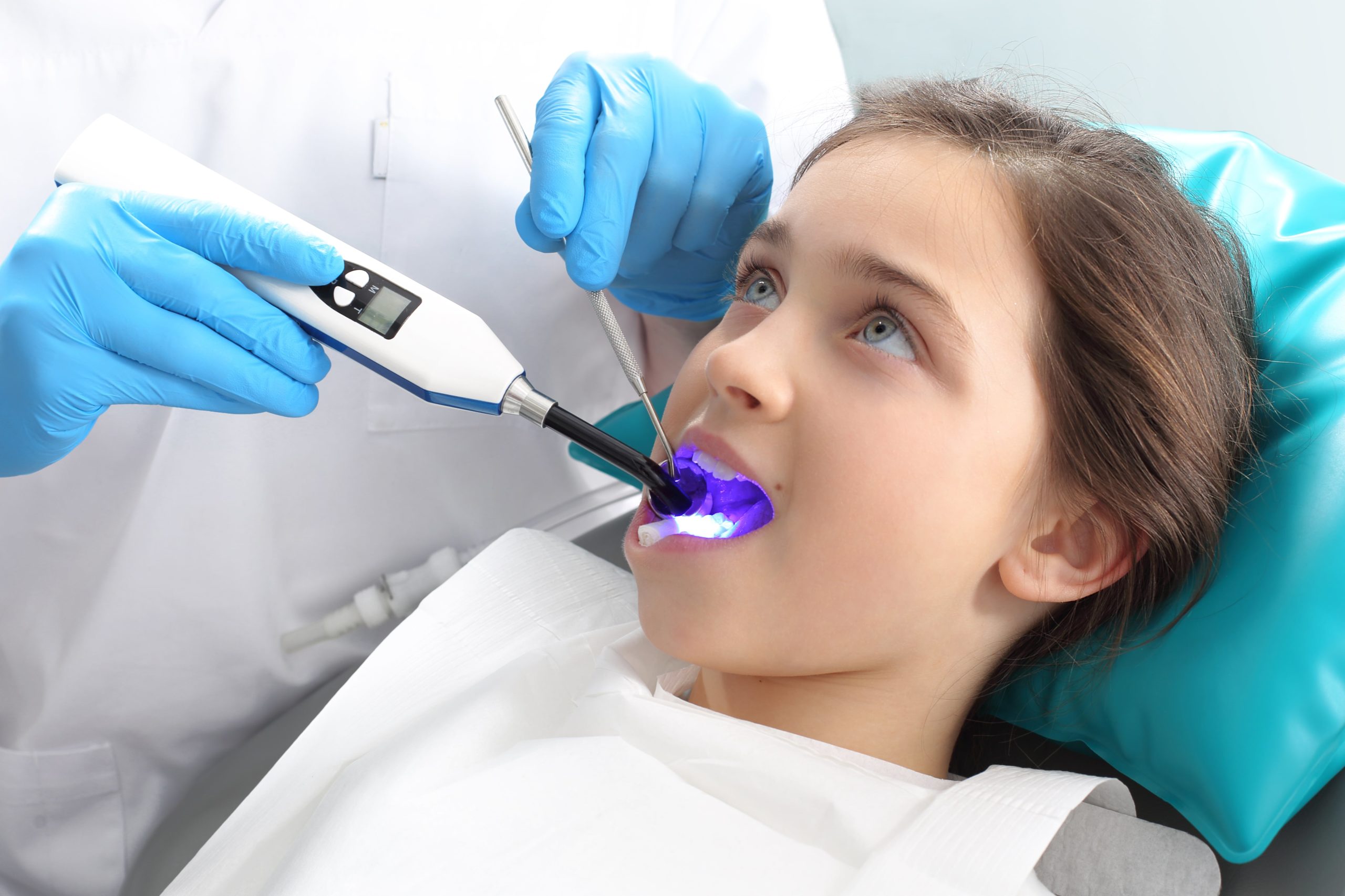You’ve been teaching your kids the ins and outs of dental hygiene: brushing, flossing, avoiding too much sugar, and more. But even though these are great habits and the foundation of a cavity-free smile, a little extra protection never hurts.
That’s where dental sealants come into play.
Dental sealants are thin, plastic coatings painted onto the grooved surfaces of molars and premolars to prevent or treat cavities.
Sealants are a common — and painless — preventive treatment that many children get. In fact, most insurances cover them for children. But naturally, as a parent, you have questions. We have answers. Keep reading or schedule an appointment to learn more.
How do dental sealants improve oral health?
When you chew, food particles get trapped in the grooves on your teeth, leading to plaque buildup that can cause cavities if teeth aren’t brushed well enough. Children who are still perfecting their dental hygiene habits may have some difficulty brushing thoroughly, especially if their molars have smaller grooves.
Sealants provide a simple yet effective solution. As their name suggests, the coating seals up the tooth, preventing those particles from becoming trapped and leading to cavities.
Are dental sealants meant only for children?
Young children whose permanent molars have come in are the most common dental patients to get sealants. However, anybody can have them. They’re good options for older teens or adults who are prone to tooth decay. Some pediatric dentists may even recommend sealants for baby teeth with deeper grooves and pits. Since baby teeth keep space for permanent teeth, it’s important to keep them from decaying or falling out prematurely.
What are the steps for applying sealants to teeth?
There’s a standard process dentists follow when applying sealants:
- Clean the teeth to remove plaque and bacteria.
- Dry the teeth and use cotton or cheek shields to keep the teeth dry.
- Disinfect and roughen the teeth with an etching solution for easier bonding.
- Rinse the solution from the teeth and dry them again.
- Apply the bonding layer, followed by the sealant.
- Harden the liquid sealant with an LED light.
The process is quick and only takes five to 10 minutes to complete. And the best news is that it is completely painless!
Is safety a concern with sealants?
There’s no need to worry! Many parents worry about the BPA in sealants and how it will affect their children, but an American Dental Association study found that there is no evidence of adverse health effects from BPA found in sealants. Salivary BPA levels peak around three hours after sealants are applied and typically return to base level within 24 hours.
There are other ways to help prevent cavities as well. Brushing with a fluoride toothpaste twice daily, flossing once a day, avoiding sugary snacks, and keeping up with routine dental appointments are all steps you and your child can take to keep their teeth healthy and clean.
Are you ready for the next step?
At Children’s Choice Dental Care, we want to do whatever we can to protect your child’s teeth as they develop and grow. In addition to offering top-tier care for each of our patients, that means being accessible to you and your family with an easy scheduling process and affordable care options.
If sealants sound like the right choice, or if you’d like to talk with us to learn more about them, schedule an appointment.

